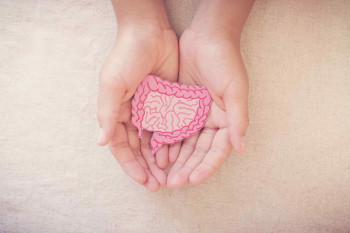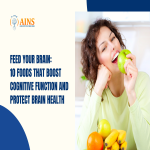Art as Medicine: A Neuro Perspective
Welcome to the enlightening blog by AINS Apex Institute of Neuro Spine, where we explore the fascinating world of Creative Art Therapy and its profound impact on neurological wellbeing. While AINS specializes in providing advanced neurological care, we believe in sharing valuable insights on complementary therapies that can enhance overall well-being.
In this blog, we will delve into the therapeutic power of art and how it can positively influence the brain, emotions, and neurological health.
Understanding Creative Art Therapy:
What is Creative Art Therapy?
Creative Art Therapy is a therapeutic approach that integrates the expressive power of art with psychological techniques. It offers a non-verbal and creative outlet for individuals to explore emotions, memories, and inner experiences, promoting self-discovery and healing. The process of creating art can be inherently therapeutic, allowing individuals to communicate feelings that may be difficult to express verbally.
How Does Art Therapy Work?
Through various art mediums such as painting, drawing, sculpting, and collage-making, individuals engage in self-expression, reflection, and communication. Art therapists facilitate the process, helping patients interpret their art and discover insights into their thoughts and emotions. By providing a safe and non-judgmental space, art therapy encourages individuals to explore their inner worlds and gain a deeper understanding of themselves.
The Neurological Impact of Art Therapy:
Art and Neuroplasticity:
Art therapy has been shown to stimulate neuroplasticity, the brain's ability to reorganize and form new neural connections. Engaging in creative activities can promote brain flexibility and adaptability. Creating art requires the brain to establish new pathways and connections, contributing to improved cognitive functioning.
Emotional Regulation and Brain Chemistry:
Creating art activates areas of the brain associated with emotional processing and regulation. Art therapy can trigger the release of neurotransmitters such as dopamine and endorphins, promoting positive emotions and reducing stress. This can be particularly beneficial for individuals experiencing anxiety, depression, or other emotional challenges.
Art Therapy for Neurological Conditions:
Stroke Rehabilitation:
Art therapy can be a valuable tool in stroke rehabilitation. Stroke survivors may face physical and emotional challenges during their recovery journey. Engaging in art activities can help improve motor skills, cognition, and emotional well-being. Art therapy offers stroke survivors a creative outlet to express themselves and cope with the emotional impact of their stroke.
Parkinson's Disease:
Art therapy can provide Parkinson's patients with a unique and enjoyable way to counteract motor symptoms and emotional challenges. Engaging in activities like painting, sculpting, and drawing can enhance fine motor skills and foster emotional expression. Art therapy can promote a sense of accomplishment and empowerment for individuals living with Parkinson's disease.
Art and Mental Health:
Art Therapy for Anxiety and Depression:
Creating art can provide a sense of accomplishment and emotional release for individuals experiencing anxiety and depression. Art therapy offers an alternative channel to express feelings and process challenging emotions. The act of creating art can serve as a mindful practice, promoting relaxation and a sense of control over emotions.
Post-Traumatic Stress Disorder (PTSD):
Art therapy has shown promise in helping individuals cope with trauma and Post-Traumatic Stress Disorder (PTSD). Art-making can serve as a safe and empowering means to address traumatic memories and foster resilience. For individuals with PTSD, creating art can be a transformative and cathartic experience.
Art Therapy and Cognitive Function:
Memory Enhancement:
Art therapy can stimulate memory recall and improve cognitive function in individuals with memory impairments. Engaging in creative activities encourages mental stimulation and cognitive flexibility. Creating art may improve working memory and help individuals retain information more effectively.
Dementia Care:
Art therapy has been utilized in dementia care to improve communication, reduce agitation, and promote a sense of connection and identity for individuals with cognitive decline. Creating art can provide a means of self-expression for individuals with dementia, even when verbal communication becomes challenging.
Enhancing Quality of Life:
Mindfulness and Relaxation:
Art therapy encourages mindfulness, focusing on the present moment and promoting relaxation. Engaging in art-making can serve as a form of meditation, reducing stress and anxiety. This mindful practice can be beneficial for individuals seeking stress relief and emotional balance.
Self-Exploration and Self-Esteem:
Creative Art Therapy allows individuals to explore their identities, strengths, and aspirations, boosting self-awareness and self-esteem. Creating art provides an opportunity for self-expression, helping individuals gain insight into their emotions and values.
Conclusion:
In this informative blog, we have explored the transformative power of Creative Art Therapy in enhancing neurological wellbeing.
While AINS Apex Institute of Neuro Spine does not provide art therapy services, we value the integration of complementary therapies in promoting holistic well-being.
Creative Art Therapy offers a unique and effective approach to addressing emotional, cognitive, and neurological challenges.
By recognizing the therapeutic potential of art, individuals can embark on a journey of self-discovery, healing, and personal growth, contributing to a richer and more fulfilling life.
FAQs
What is Creative Art Therapy?
Creative Art Therapy is a therapeutic approach that integrates art and psychology to promote self-expression and healing. It offers individuals a non-verbal means to explore emotions and foster personal growth.
How does Creative Art Therapy benefit neurological health?
Engaging in creative activities stimulates neuroplasticity, enhancing the brain's flexibility and cognitive function. Art therapy also promotes emotional regulation and can positively impact neurological well-being.
Can Art Therapy aid stroke rehabilitation?
Yes, Art Therapy can be beneficial in stroke rehabilitation. It helps stroke survivors improve motor skills, cognitive abilities, and emotional well-being through expressive art-making.
Is Art Therapy helpful for individuals with anxiety and depression?
Absolutely! Art Therapy provides a therapeutic outlet for individuals experiencing anxiety and depression. Creating art can reduce stress, boost self-esteem, and offer a safe way to process emotions.
What role does Art Therapy play in dementia care?
Art Therapy plays a significant role in dementia care. It improves communication, reduces agitation, and fosters a sense of identity and connection for individuals with cognitive decline.
























